Deborah R. Fowler
Collaboration, STEM and SCAD VSFX
Posted on April 1 2017
It can be seen at Goddard Media Studios, youtube as well as the teaser trailer (Nov 21, 2016)
Articles/Postings
- https://www.nasa.gov/feature/goddard/2017/a-photon-debut-student-short-film-for-icesat2
- https://www.facebook.com/nasaearth/videos/609757292552365/
- https://www.facebook.com/NASA/videos/10154962545666772/
- http://www.space.com/35940-student-nasa-film-stars-adorable-photon.html
Images directly below from the nasa gov (http://icesat-2.gsfc.nasa.gov/)
student designed website include mascots Pho and Paige as well as
the posters/bookmarks below:
Some also available at https://svs.gsfc.nasa.gov/12209
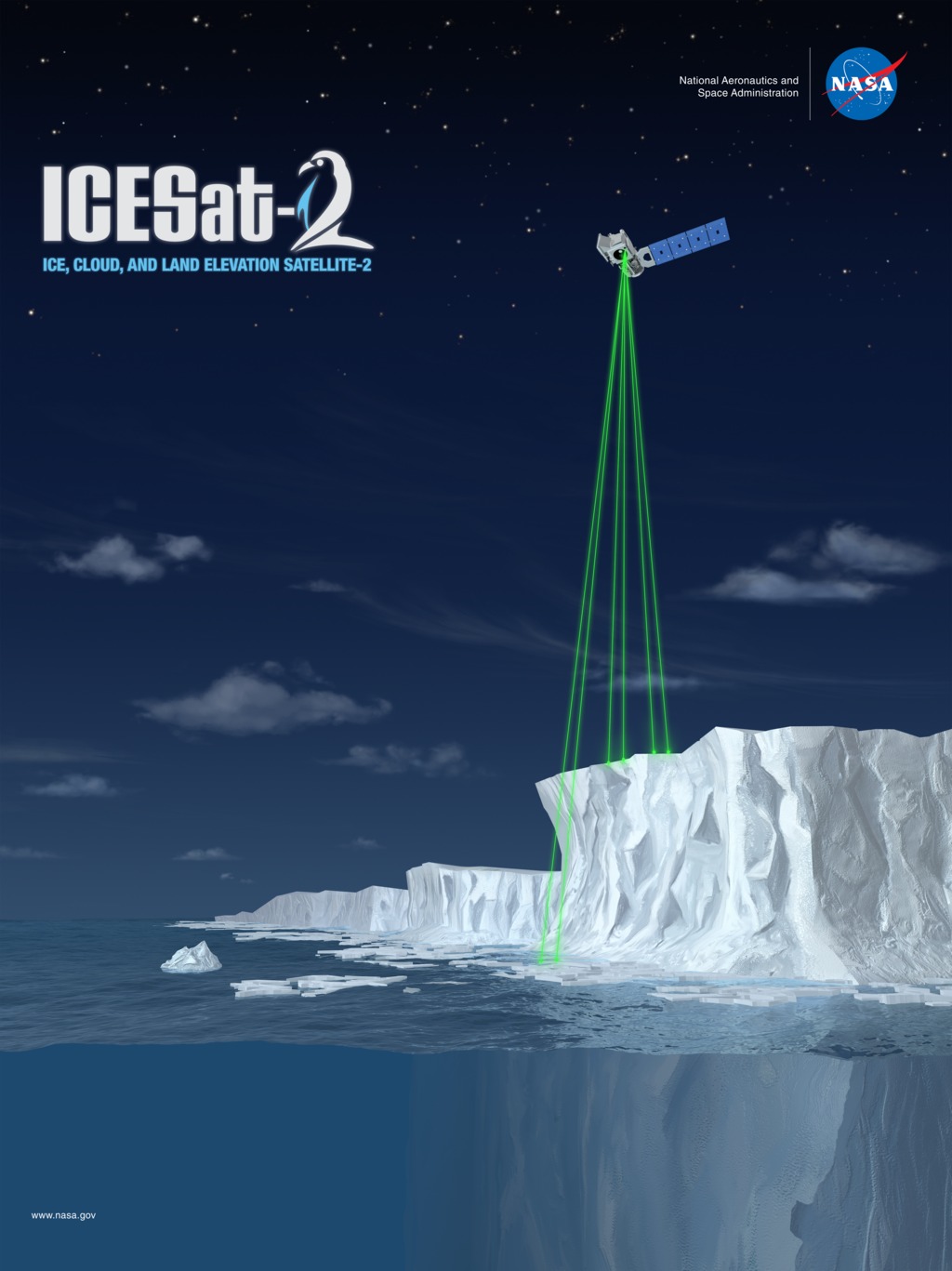
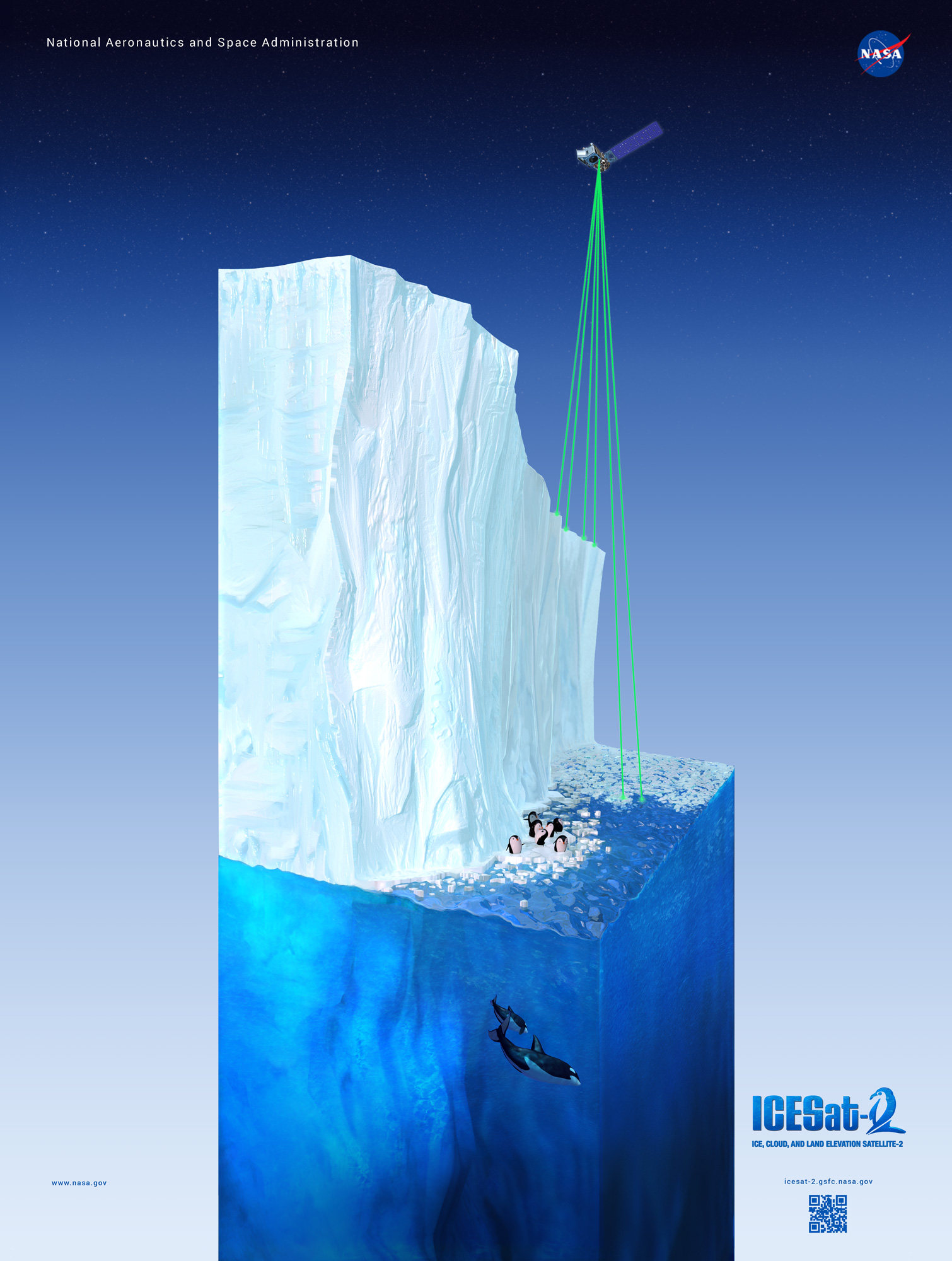
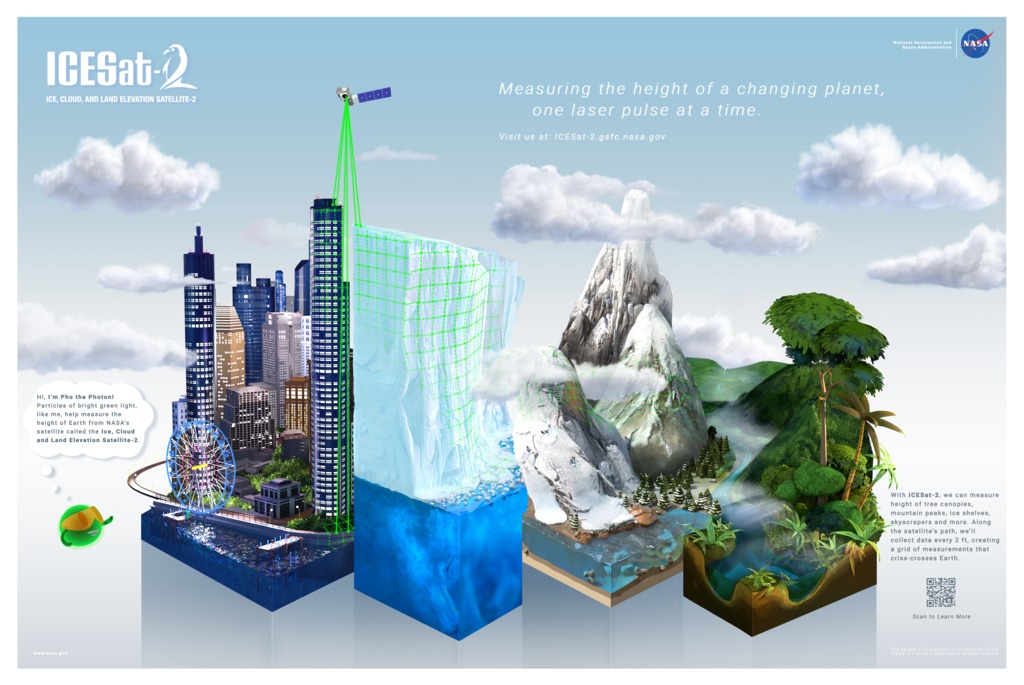
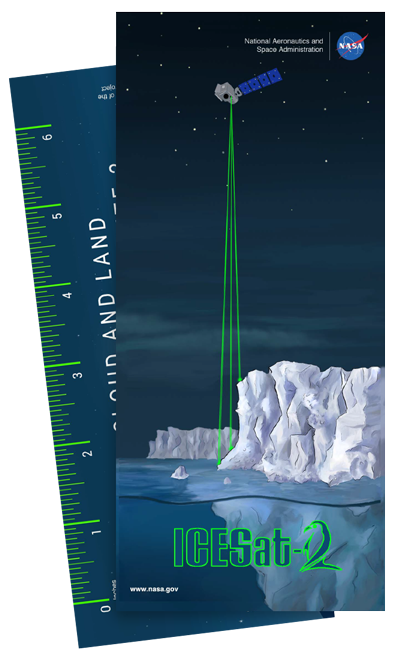
Collaboration (a case study)
In Spring 2014 a collaboration with NASA/GSFC ICESat-2's mission and SCAD started as a Collaborative Learning Center (CLC) class for an EPO effort regarding ICESat-2. The ICESat-2 satellite uses state of the art laser technology to measure the height of Earth’s surface and to gain a better understanding of Climate Change by collecting various types of data.To date we have had 27 custom internship opportunities, 1 alumna hire at Goddard Space Flight Center and numerous tangible products including posters, bookmarks, website re-design and an animation short. In the process students and faculty have gained a better understanding of the goals of the mission as well as an interdepartmental appreciation. For this project we had a mix of Visual Effects, Animation, Motion Media, Sequential Art and Sound Design students, both graduate and undergraduate.
From ideation to development to realization students worked alongside faculty and science experts, developing structures for partnerships. More details can be found regarding this collaboration in the publication "Collaborative Computer Graphics Product Development between Academia and Government: A Dynamic Model" from ACM SIGGRAPH Asia 2016 by Helen-Nicole Kostis (USRA/GESTAR SVS NASA/GSFC) and Deborah R. Fowler (SCAD).

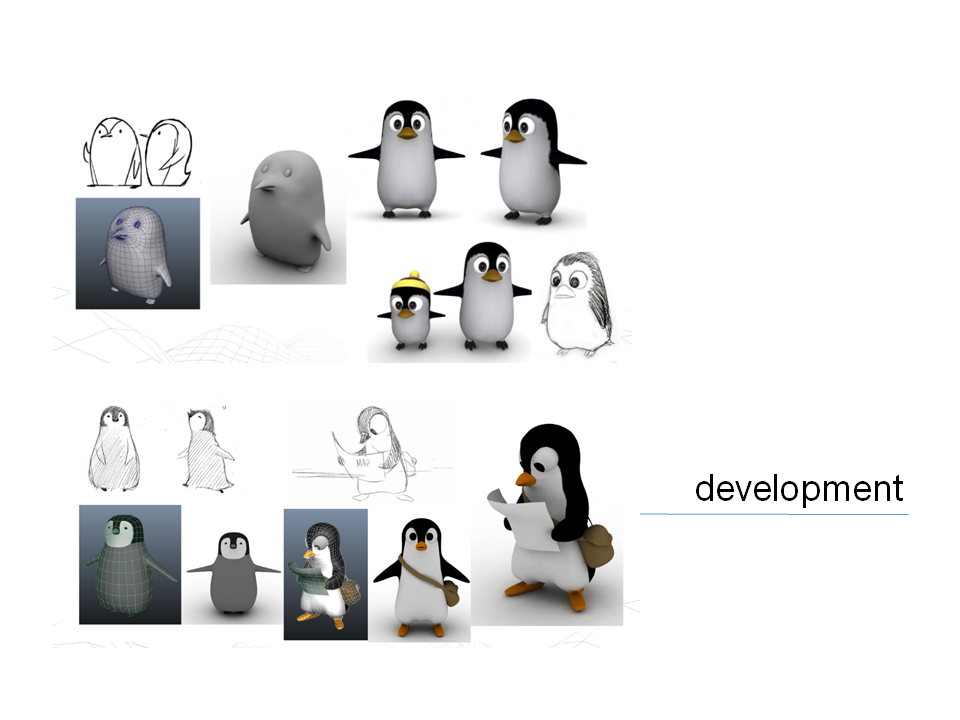
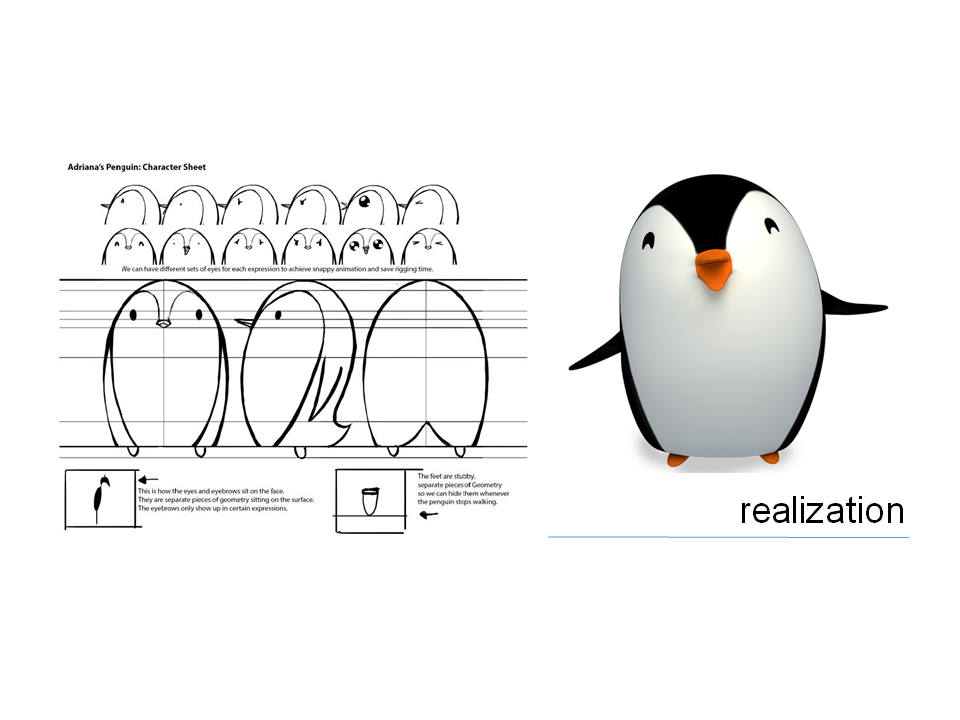
This collaboration has continued from initial design concepts (seen with early Pho) to final design (seen with later Pho) who stars in an animated short.
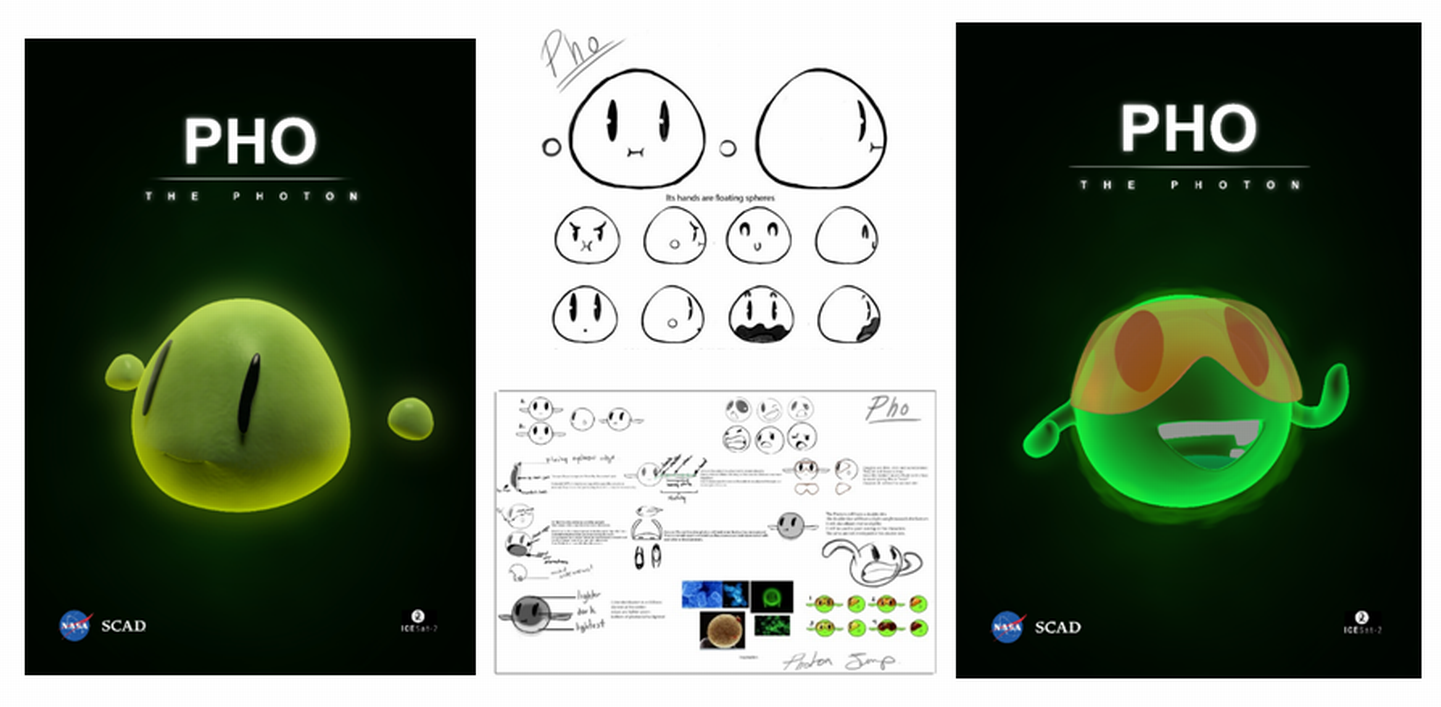
Computer Graphics (CG) is considered the marriage of science and art. At SCAD, the digital media building houses the majors related to CG. Namely, Visual Effects, Motion Media, Animation, and Interactive and Game Design.
For example, as described in this excerpt
- Physical modeling, Geometry and Topology - Students at SCAD must understand Geometry and Topology in order to build models for movies, commercials, games, visualizations. There is a direct relationship and this is practiced - from the characters that are built for animating to environments that are portrayed.
- Physics - for understanding movement of characters as well as being able to apply dynamics for effects is also applicable.
- Math and logic are absolutely required to solve problems and create expressions within the technical software that is used in production, from effects to compositing.
- Optics help both in understanding ICESat-2's laser technology, to understanding lighting and rendering, this comes into play.
Computer Graphics requires algebra, trigonometry,
linear algebra, basic physics and a little bit of calculus. (a
list can also be found here)
Math/Science students definitely should consider
SCAD for their careers:
- Departments such as Visual Effects combine aesthetic and technical skills and students are hired at major studios such as Pixar, ILM, DreamWorks, Blur, Method, The Mill and the list goes on. In addition, with the advent of VR there are also opportunities to use these skill sets inside and beyond the entertainment industry. Architecture and medical visualization would be two examples.
- SCAD forms collaborations and internships with industry and partners that use techniques and tools relating to math and science, including NASA.
- The concepts of mathematics are applied to visual representation. For example, matrix multiplication becomes a method for manipulating geometry on a computer screen, a sin function can be used to create an animation of a bouncing ball, physics is implemented in the tools we use to simulate real world events such as object colliding, exploding, or moving.

Visual Effects
In particular, Visual Effects produces those things
which cannot be real, but can be imagined and made to look real.
A visual effects artist is a master of illusion and their
toolbox must include math and science to support those effects.
All images copyright NASA/GFSC/ICESat-2/SCAD.
All images copyright NASA/GFSC/ICESat-2/SCAD.
